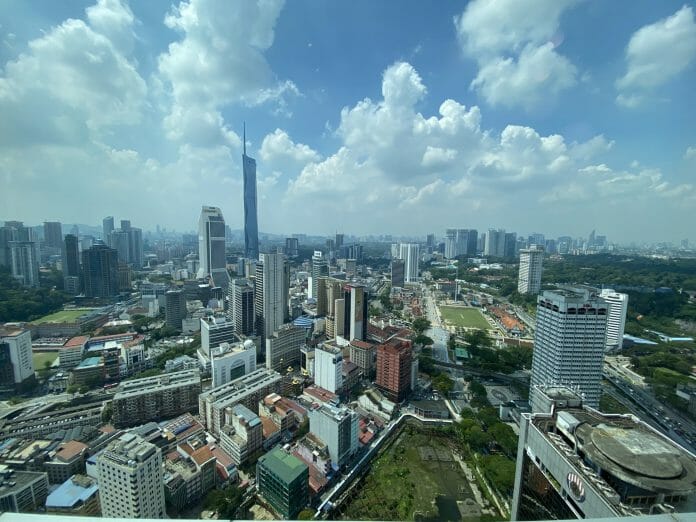Kenanga Research Economic Viewpoint cited today (Sept 12) that to ensure that Malaysia remains on the right growth trajectory towards achieving the aspiration of Ekonomi MADANI, the government plans to adopt a strategic approach encompassing three core focus areas.
These areas will be underpinned by comprehensive strategies and a wide array of initiatives designed to effectively address the country’s key issues and challenges.
− Strengthening sustainability: To bolster economic growth, enhance fiscal sustainability, and expedite the transition towards a future-proof economy, the government has devised a comprehensive strategy. This strategy includes an accelerated program of structural economic reforms, a concerted effort to reinforce Malaysia’s presence in the global value chain through robust external trade, and the harnessing of untapped economic potential within various regions and states. Central to this approach is the emphasis on nurturing high growth high value (HGHV) industries.
To achieve this, the government is actively working to attract more quality investments in technology-based sectors, leveraging innovation and expertise to drive economic advancement. Also, the government remain committed to a gradual transition into renewable energy sources as part of the country’s national energy transition roadmap.
Additionally, efforts will be undertaken to implement targeted subsidies that align with broader economic objectives.
In this regard, the government will develop a comprehensive household database known as Pangkalan Data Utama (PADU) to streamline the distribution of more precisely targeted subsidies and assistance, with an immediate focus on subsidies for electricity, diesel, and petrol.
While Kenanga maintains some scepticism about PADU’s ability to fully eliminate resource allocation distortions by effectively minimising exclusion and inclusion errors, Kenanga views this initiative as a positive step toward achieving a more efficient economy.
The anticipated savings from the subsidy retargeting can be channelled into funding various socioeconomic projects and programs.
− Building a prosperous society: To address the multifaceted challenges in reducing poverty, increasing household incomes, improving the standard of living, and narrowing inequality, the government is embarking on a comprehensive set of initiatives.
These initiatives include social protection reforms, the strengthening of healthcare services, and enhancing access to affordable housing. As Malaysia is projected to become a super-aged nation by 2056, it is imperative to implement inclusive social assistance, social insurance, and labour market interventions.
This approach is crucial as older individuals without adequate social protection are more vulnerable to poverty. To bolster the silver economy and promote the employment of older workers, the government will incentivise the hiring of elderly individuals.
On the healthcare front, a holistic approach will be taken to cater to the needs of older individuals. The Skim Perubatan MADANI will continue to provide access to private healthcare services for those with limited financial capability.
Also, progressive taxes on unhealthy products will be introduced to encourage healthy ageing. Regarding housing, the government is committed to intensifying efforts to provide quality and decent housing for poor and low- income households through affordable housing programs.
The Rent-to-Own housing program will be enhanced to facilitate easier access to home ownership financing. Additionally, new rental tenancy regulations will be introduced to promote rental as a viable alternative to home ownership.
However, Kenanga believes that reforming the housing supply side and enhancing the property market efficiency are essential steps that need to be taken by the government as excessive spending on social housing could strain government finances and limit overall societal growth and well-being.
− Achieving high-income nation: To enhance economic resilience, primary focus will be on fortifying the resilience of sectoral and strategic industries, promoting competitiveness to sustainable growth, optimising financial support mechanisms, and strategising the development of industrial estates and food production areas.
Apart from emphasis on High Gross Value (HGHV) industries and high technology to achieve higher productivity and income for the nation, the MTR highlights the importance on food security.
To highlight, the government will implement measures to promote investment and bolster productivity within the agrofood subsector, leveraging smart farming technologies, expanding high-value crop cultivation, and optimising food production zones.
These measures are expected to substantially increase the agrofood subsector’s share to approximately 57.0% of the total agriculture value-added by 2025, a significant step toward achieving greater food security.
Kenanga said on rice, a critical food item for the country, it is concerning that the country’s dependency on imports to meet domestic demand remains high.
The self-sufficiency ratio (SSR) for rice decreased to 62.6% in 2022 (from 65.2% in 2021). This declining trend in food SSR is worrisome, particularly given the ongoing uncertainty in the geopolitical landscape and climate-driven disruptions.
Despite all the measures to increase the area of crops, the government rice production target of above 3.0m tonnes is too ambitious considering that last year, rice output decreased to 1.6m tonnes (2021: 1.7m).
However, with substantial government support for farming technology, increased investment in research and development, and strategic partnerships with the private sector, we remain optimistic that Malaysia can significantly enhance its food security.









